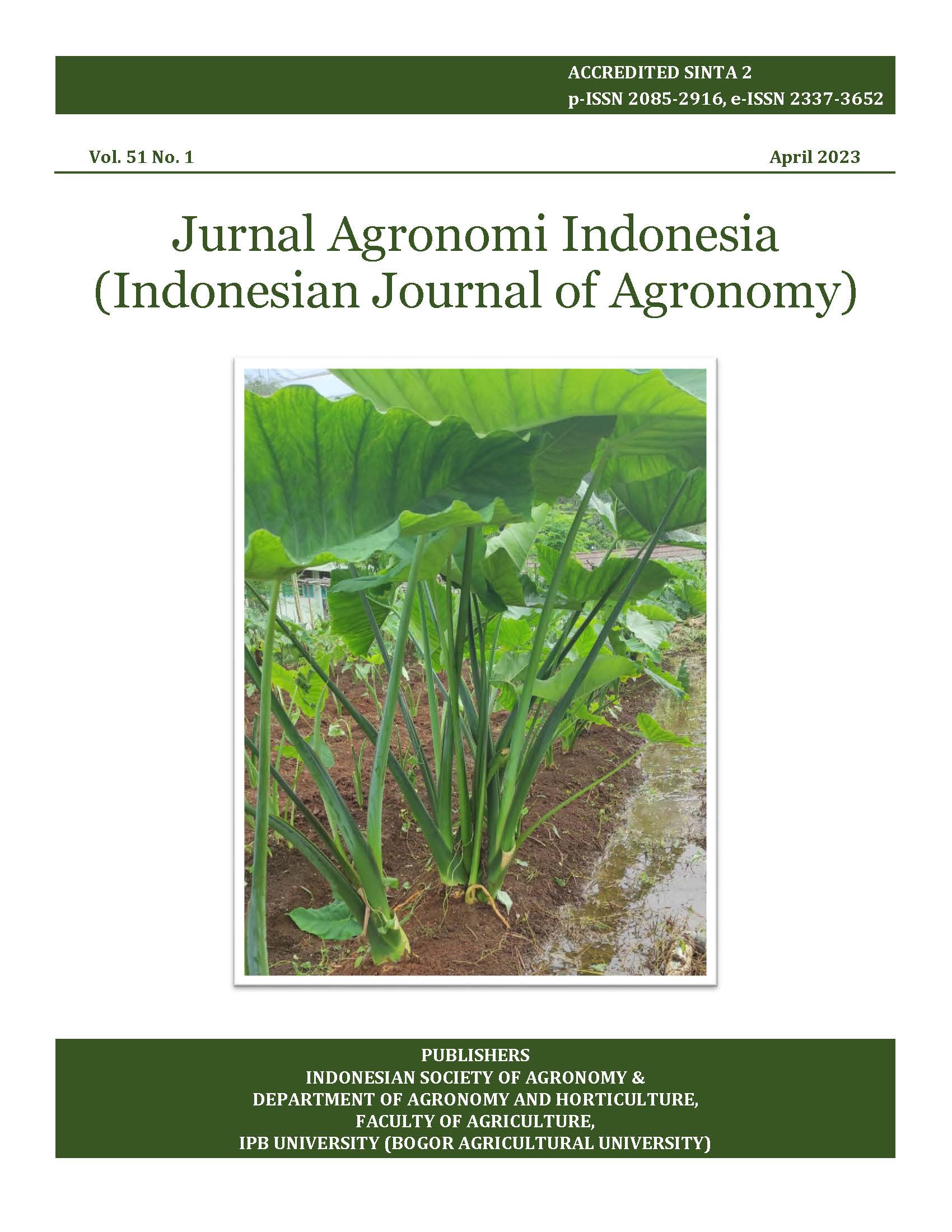Leaves production and its flavonoids content of moringa (Moringa oleifera Lam.) from fulvic acid treatment
Abstract
Moringa is drought tolerant and its leaf is traditionally used as a vegetable. Recently, the leaf is used commercially in traditional medicine and functional foods. Fulvic acid is a kind of plant growth regulator derived from humic acid and is considered a fertilizer in sustainable agriculture. The objective of the research was to determine the effect of fulvic acid concentration on the growth, biomass, phosphorus and flavonoids contents of moringa seedlings. The experiment was conducted from July 2020 to January 2021 at Leuwikopo Experimental Station, Bogor. The treatment was arranged in a randomized block design consisting of two factors, i.e., fulvic acid level (0, 1, 2, 3, and 4 mL L-1) and moringa accessions (East Nusa Tenggara-ENT and Leuwikopo-LWK). Observation focused on growth and biomass, total flavonoids, and phosphorus contents of leaves. The results showed that fulvic acid enhanced leaf growth, and plant height. On the other hand, the fulvic acid application had no significant effect on biomass production, total flavonoids, and phosphorus contents of moringa leaves. Accessions expressed different responses to fulvic acid levels, i.e.e, the fulvic acid of 1 mL L-1 seemed favorable for ENT accession while 2 mL L-1 was favorable for LWK accession as indicated by the level of flavonoid content. Therefore, fulvic acid is beneficial in moringa cultivation, particularly for ENT accession. It is interesting to evaluate the fulvic acid application on moringa trees grown in ENT where soil moisture is considered low.
Keywords: accession; phosphorus; seedling; humic acid; East Nusa Tenggara; vegetable













